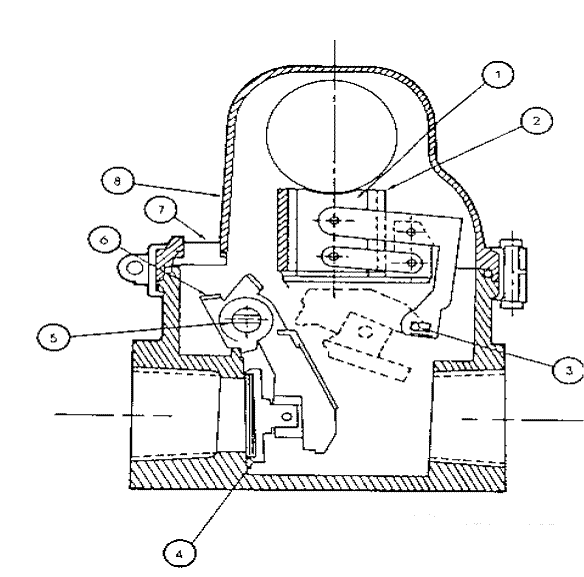|
The Solution The KOSO valve is a mechanical device which, when installed on a building's gas meter, is engineered to trigger a gas shut off when the sinusoidal oscillations of a quake reach approximately 5.5 on the Richter Scale over a period of five seconds. This has been proven to be the point at which structural damage can occur. The valve is secured to the exterior of the building downstream of the meter and responds to motion in the structure not from passing trucks or trains. Automatic Gas Shut-Offs have been successfully used on the U.S. West Coast for over 20 years. Motivated by the January 12, 1994 earthquake in Northridge, L.A., where gas fueled fires destroyed hundreds of homes, Los Angeles County building codes now mandate the installation of these valves in all new construction. In Japan, the installation of seismic actuated gas shut-off valves has also been required for the past two decades. Nearer to home, seismic gas shut off valves have been installed in Oregon, Washington and Alaska since the 1940's. In 1990, a company founded by a consulting engineering firm obtained certification of the valve, and installations began in British Columbia with Vancouver General Hospital being the first to seismically protect and upgrade their natural gas lines. The Product The KOSO valve consists of three major components: the Valve Housing, the Shut-off Mechanism, and the Trigger Mechanism. Valve Housing The valve housing is made from cast aluminum. Aluminum castings will not corrode under most conditions. The lower section of the housing has threaded (or flanged) connections to allow for the gas inlet and outlet pipes to be connected. A mount for the internal mechanisms is also incorporated into this part of the housing. The upper section consists of a cast aluminum bonnet with a window inset. The window allows the condition of the internal mechanisms to be viewed (open or closed). The upper housing attaches to the lower housing through the use of a gasket and snap-ring. The main purpose of the housing is to allow the gas to flow through the valve (all around the internal mechanisms) at operating pressure without leaking. Shut-off Mechanism The shut-off mechanism is very similar to a standard "check valve". When the valve is in the "open" position, gas enters the valve and flows straight through to the outlet with minimal flow restrictions. When the valve is closed, a "soft-seat" (rubber covered metal disc) swings down to cover the gas outlet hole. This effectively cuts off the gas flow. The seat swings down into position due to a gravity-assisted spring. Once in position, the gas pressure presses the seat tighter against the frame giving a positive seal. This mechanism has two indicators attached to it: one marked "open" and the other marked "closed". When the valve is open or closed, the correct indicator is aligned with the window in the valve housing. A manual reset screw allows for the raising of the shut-off mechanism. Trigger Mechanism The shut-off mechanism is locked into the raised position through the use of a latch. The latch is of the "rolling" type which serves two functions. Firstly, it decreases friction between the latch and the shut-off mechanism. This eliminates the likelihood of the valve "sticking". Secondly, it is positioned to automatically reset after minor movement This means that an accumulation of low amplitude movement will not set-off the trigger over a period of time.  1. Stationary post, supporting ball 1. Stationary post, supporting ball 2. Reacting cylinder 3. Rolling Latch (no sliding friction) 4. Soft seat 5. Manual reset 6. Position indicator 7. Window 8. Bonnet This is a very simple design, consisting of a standard check valve and an acceleration sensitive triggering mechanism The ball is located on a stationary post (item #1), which has a seat formed of certain angularity horizontal. This angle allows the ball to roll when subjected to approximately 0.11g horizontal acceleration. The weight of ball is then transferred to the reacting cylinder (item #2) activating the valve to close. Note the rolling latch. The latch mechanism automatically resets when subjected to very low amplitude accelerations. The mechanism will not creep in time to an actuating mode.
|